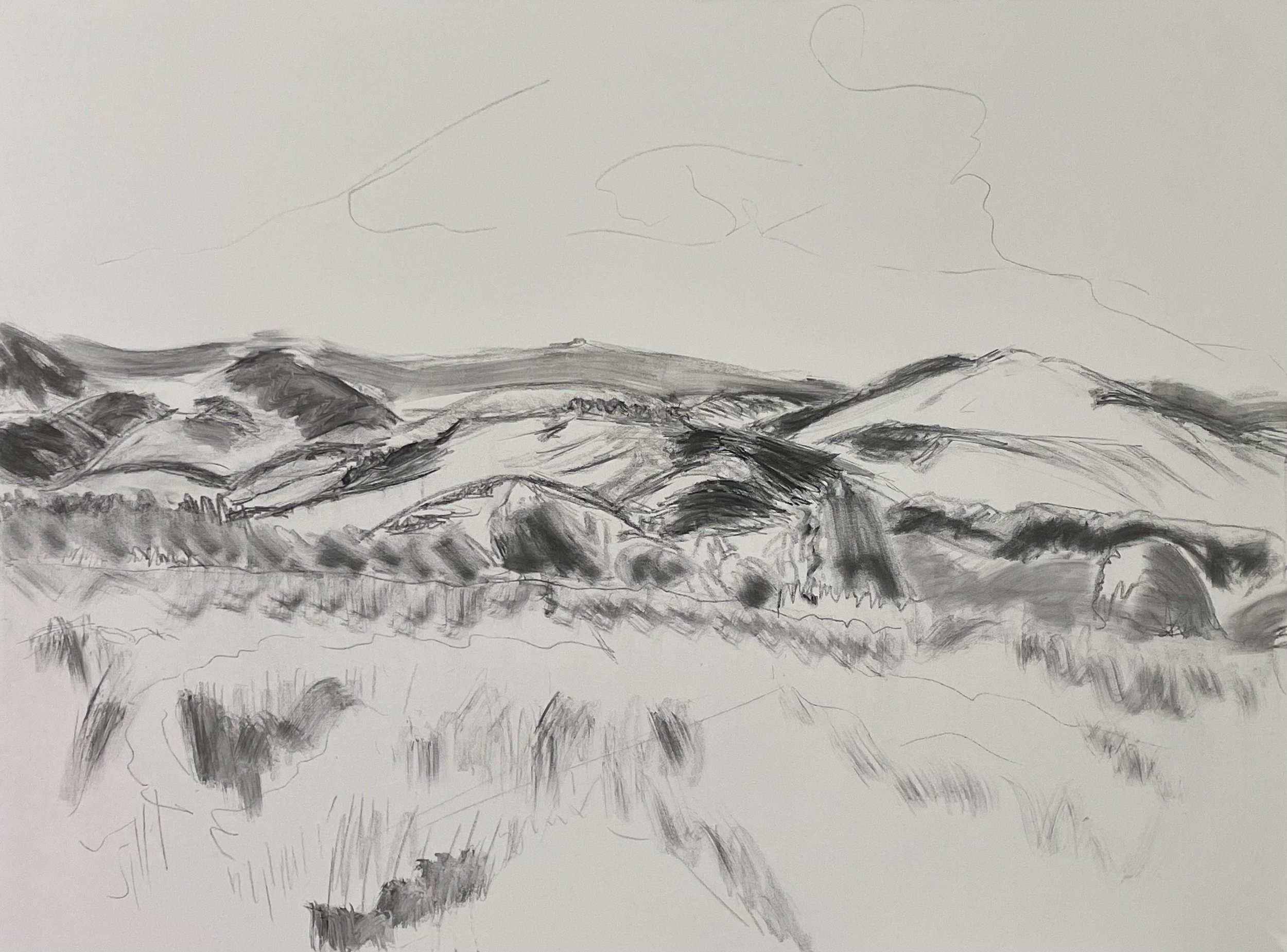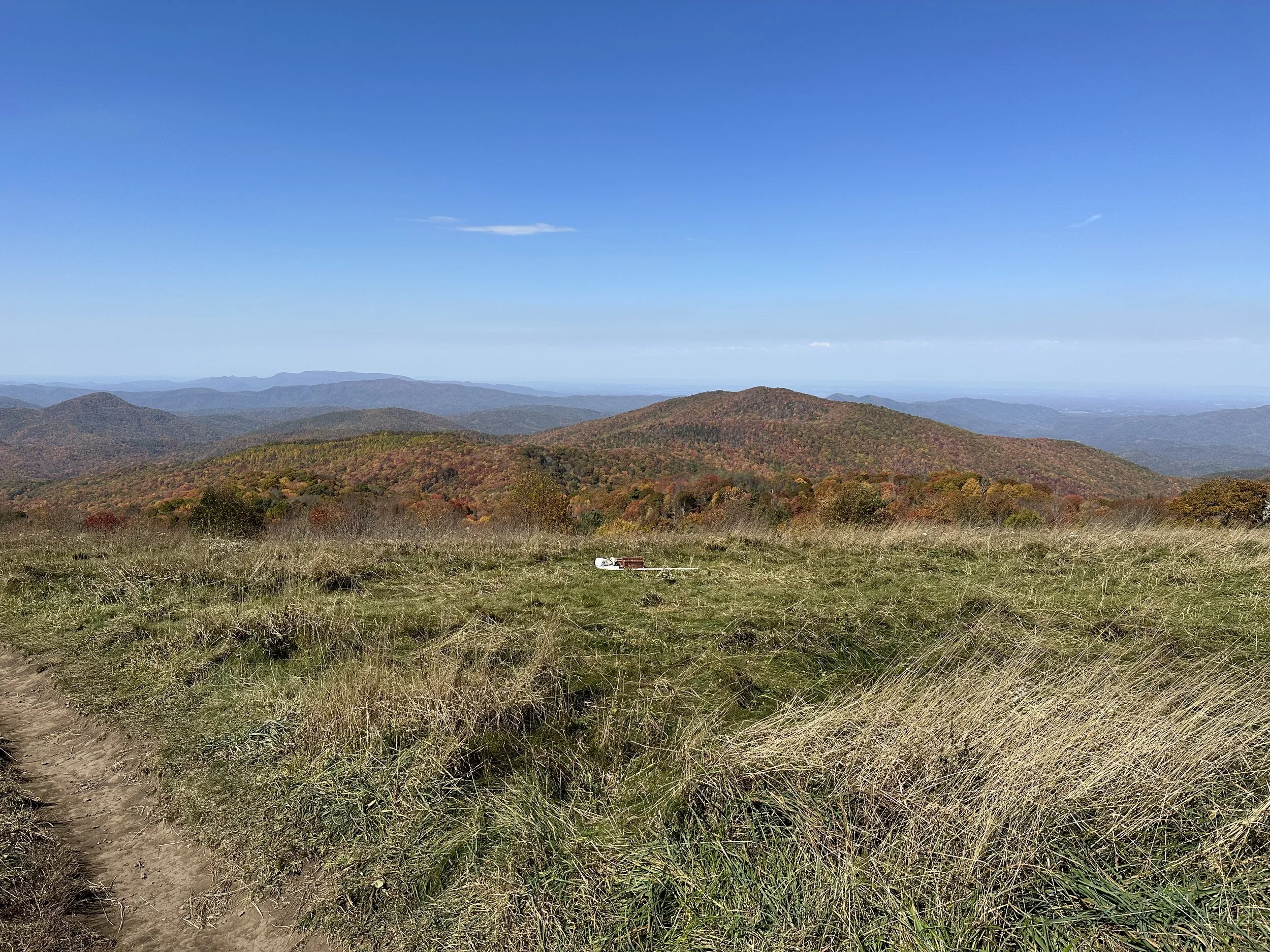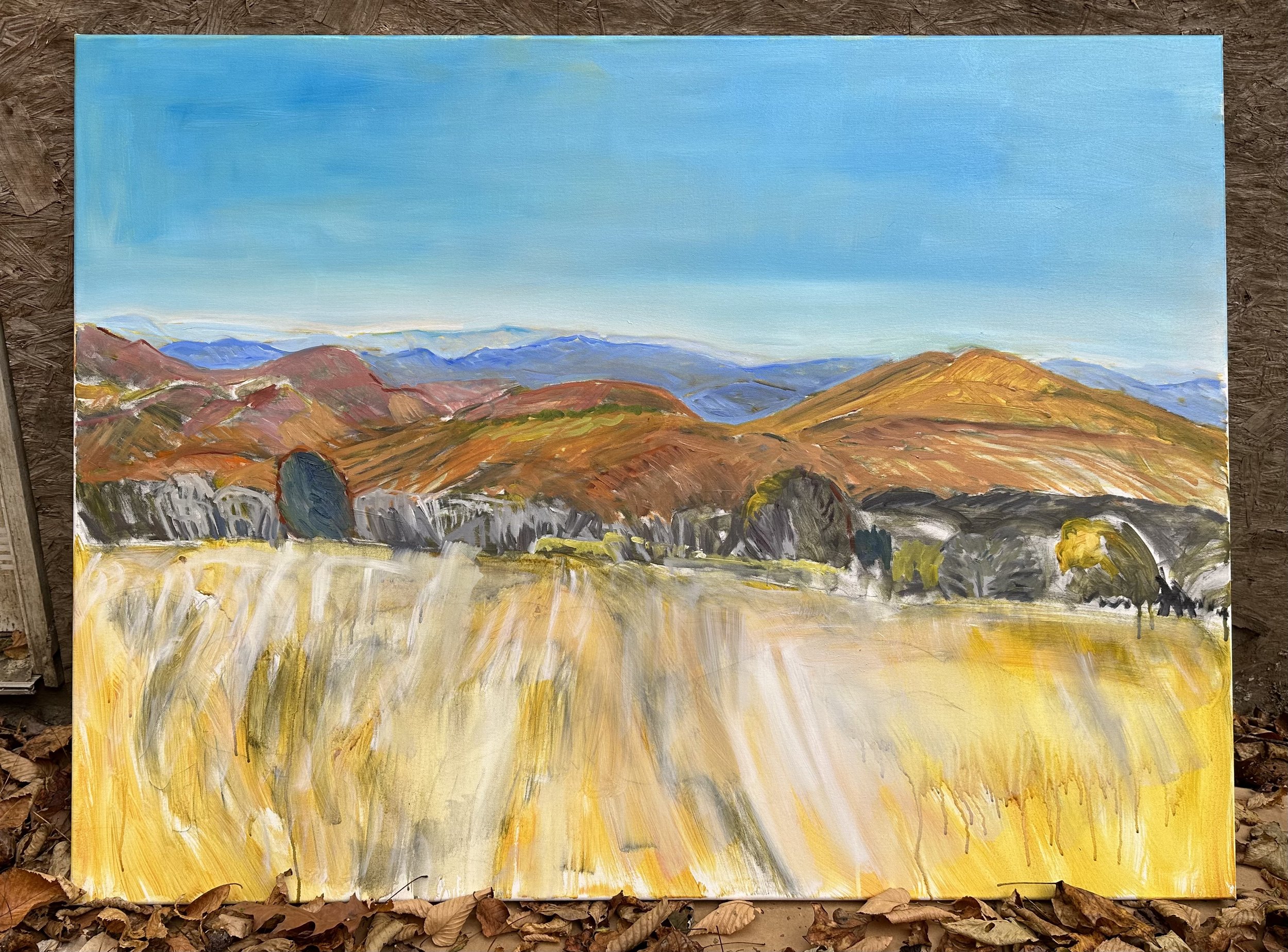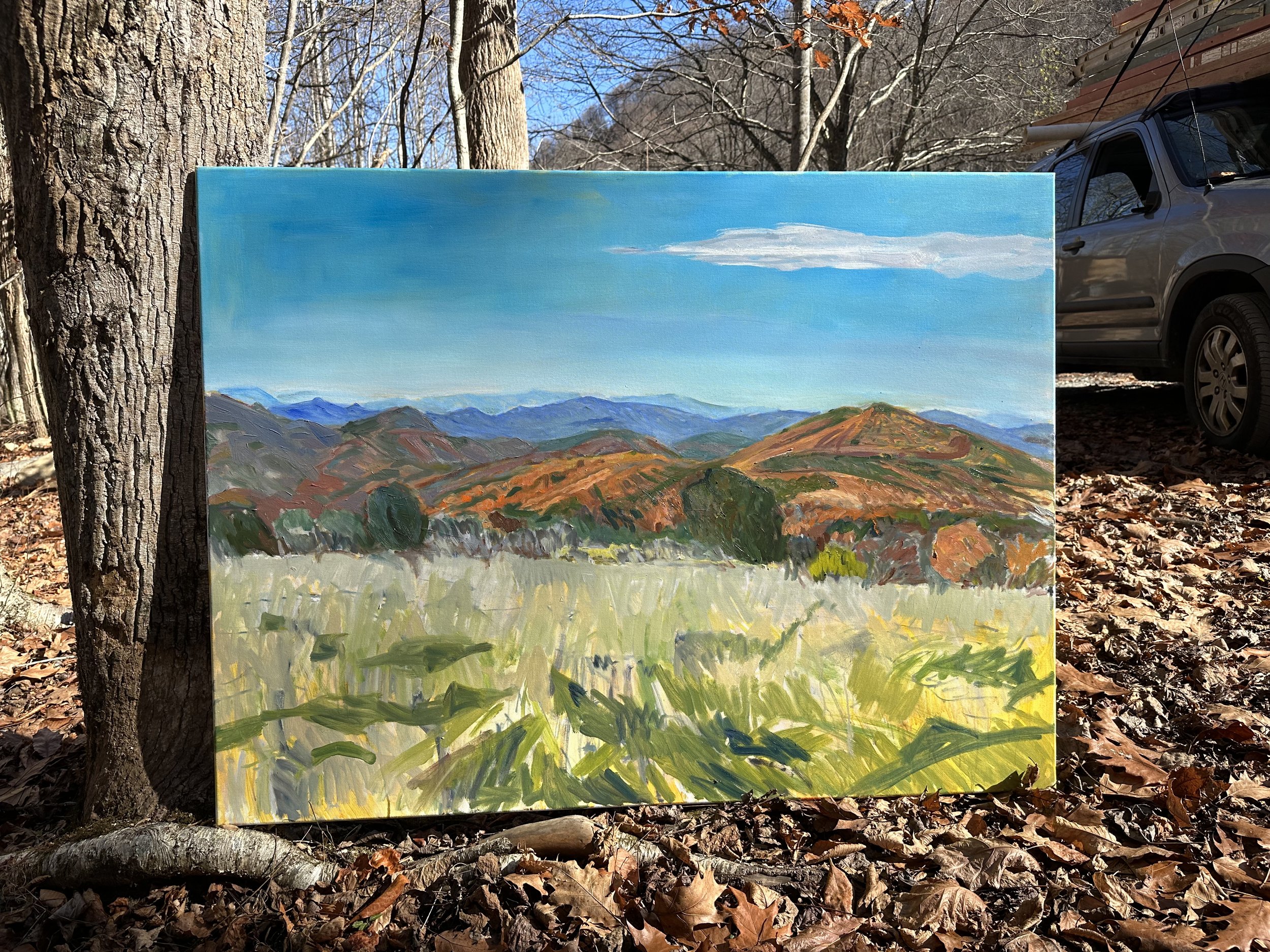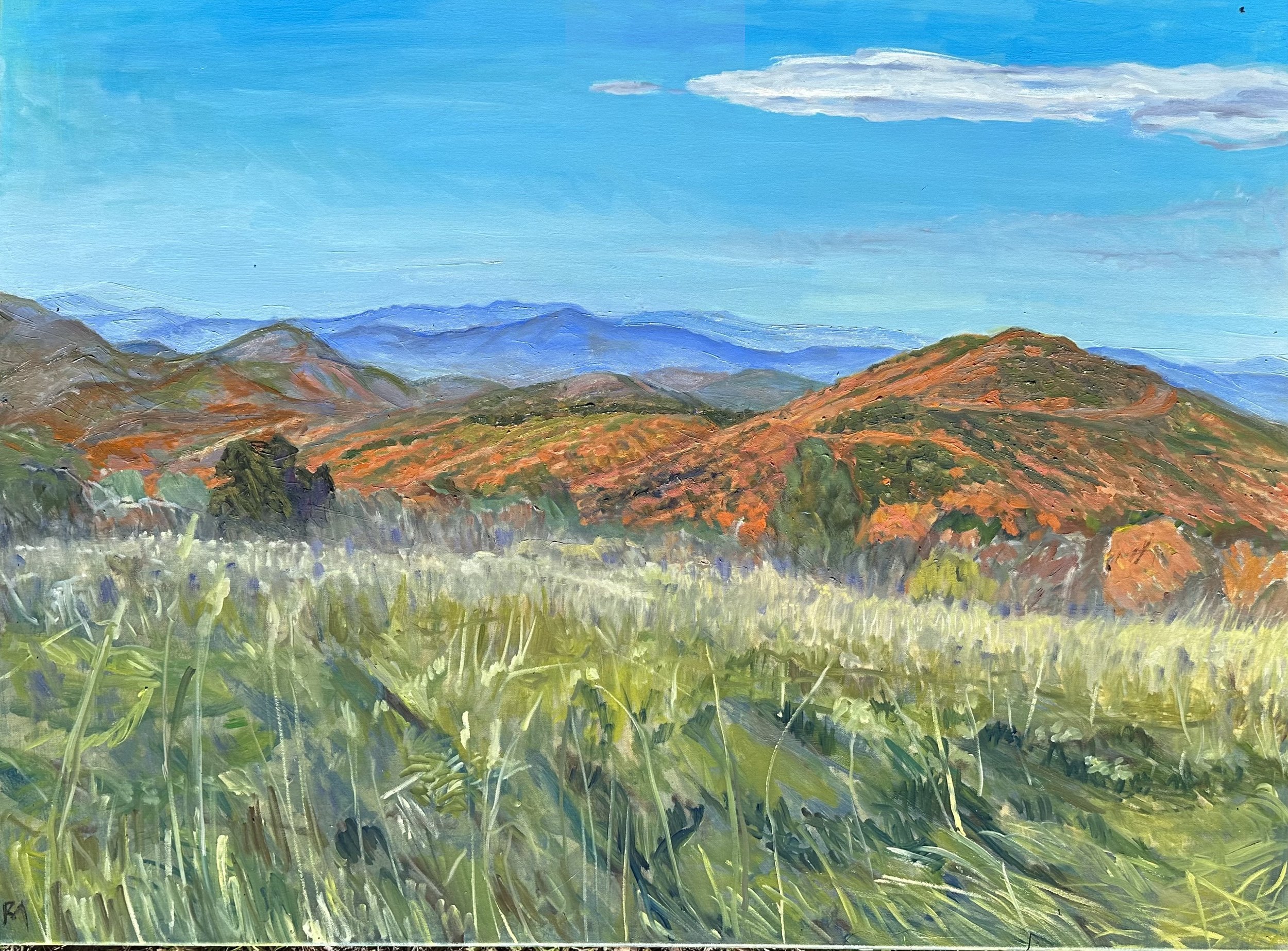For several years I have attempted views of Max Patch, mostly on small canvases. it’s such an immersive site, a 360º view of Appalachian mountains in NC and TN. The Appalachian Trail passes across this high meadow. Lugging the gear up here is an ordeal and then there’s the wind. But what a view.
In July, I brought fellow painter John Whelan up here and we worked from this site, looking (I believe) into Tennessee. Everything was green and without ready paths for me to generate perspective. I knocked out a crude study of the mountains on two panels and put it aside.
Back at the studio, I transferred the scene to a 3 by 4 canvas using graphite and then some turps to create soft gray passages that I overlaid that with an ochre orange wash. And there things sat until mid October.
I went up to Max Patch on perhaps the peak fall leaf interval lugging all the gear but it was simply too windy to set up a large canvas so I took a few reference photos to get started and soaked up those extraordinary mountain gusts.
Working from a mixture of memory and reference photos, I started to fill in the scene, hoping for another chance to get up there. I focused upon the mountains and sky.
Almost from the start, I was responding to those strong gusts from the hike up there. It was really exciting to play with the orange, yellow, and blue and it took a lot of time to refine. I set it aside for the rest of October and finished the Hot Springs bridge scene. When I picked it back up I was already trying to carve some perspective into this foreground with some green triangular shapes. I made easier headway on the upper half and, in an exception to my usual approach, I worked from the top down to the middle of the canvas, leaving the bottom for last. Here are a few examples of that progress.
So what I was searching for, without knowing it, was a ground - a bed on which to complete the foreground. I ended up using turps to erase things and get as close back to the third version as I could. Then from there I carefully studied the video and reference photos to create a foreground. Even then, I found myself hampered by the journalist-illustrator mindset, so I turned the canvas and reference image upside down and started from the midline up to create the bed of the meadow without knowing how it would end up. Happily, this approach freed me up to make strokes and add direction that allowed me to suggest a level of detail and movement that I couldn’t do with the scene right side up. It worked a little like contour drawing by interrupting my habitual impulses and focusing me on what was in front of me on the canvas. I needed to give the ground beneath the foliage a structure and direction that was strong enough without pushing ahead of what came before or would come next . Eventually, I got there after a series of reworking and overpainting to soften the sharper directional shadows. And once that foreground was in place, I began timidly to put in the wheat-colored stalks on the meadow and add the hay beds into the foreground. Once this was underway, it was a lot of fun. This is when it came together for me. This was done almost wet on wet so that it cut into the bed in places. I then went back into the midpoint and made some adjustments such as stressing the downslope on the right and reworking various details in the left-hand mountains and the distance. Finally, I added a layer to the sky to make it look more complete. And that’s how I got here.

